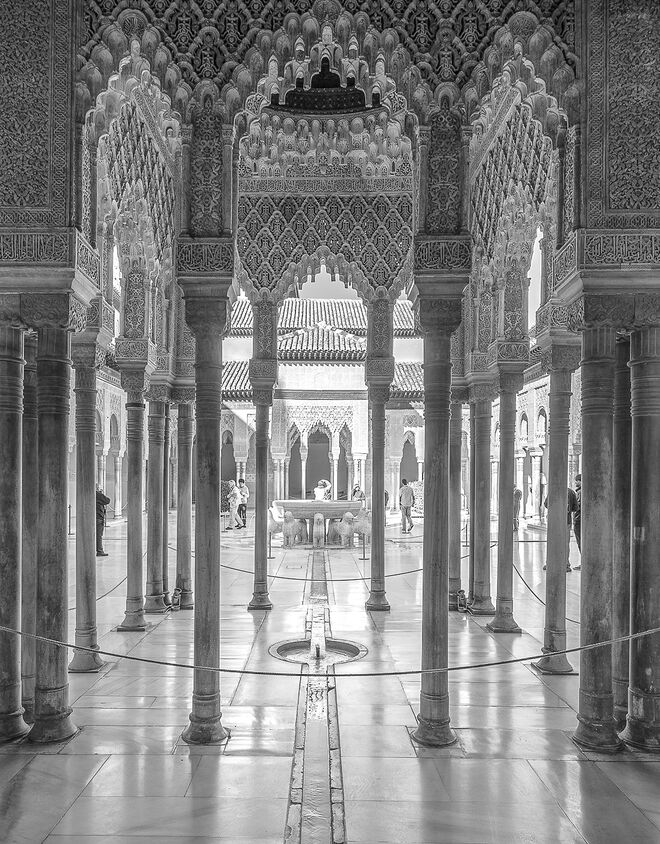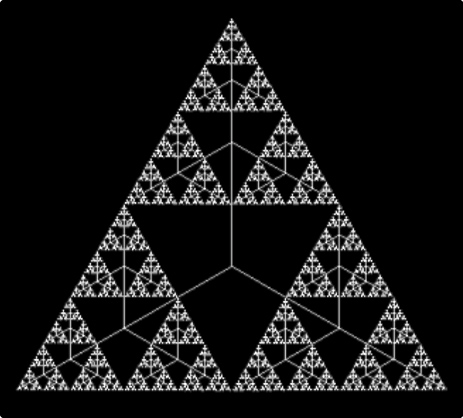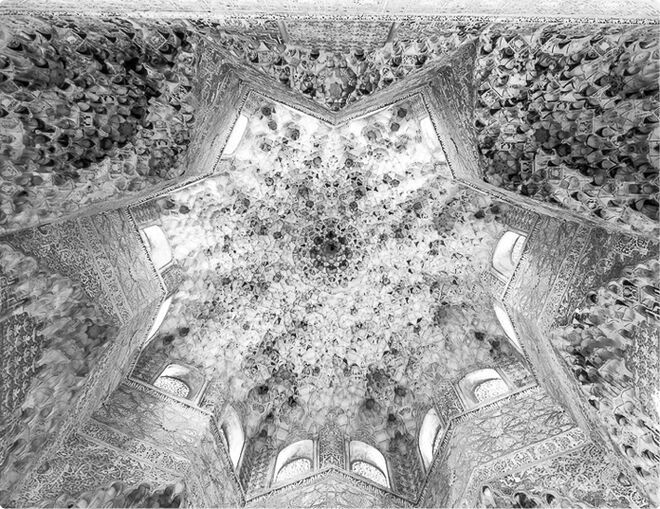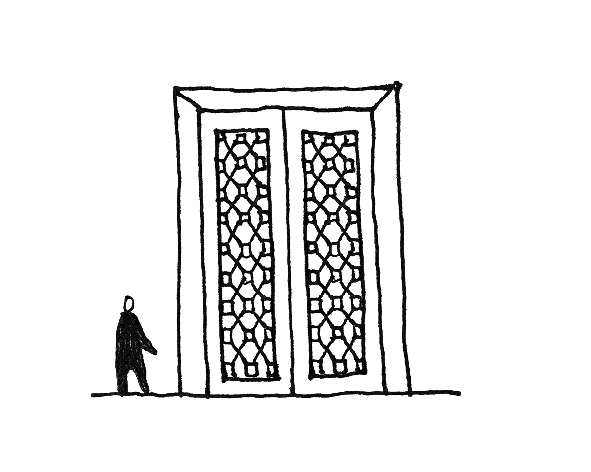11.3. Fractal Pattern
Aus Pattern Language Wiki
Fractals are a basic characteristic of a Biophilic Urbanism.
Problem-statement: How can we generate more complex and beautiful patterns in design?
Discussion: One of the most common patterns in nature, and also one of the most beautiful, is known as the fractal. The mathematician Benoit Mandelbrot coined the term to refer to structures that contain self-similar elements at different scales, which can be described with mathematical precision (and even re-generated on computer). He and other researchers found that very many patterns in nature do have this fractal structure — as do many traditional structures in human environments. Examples of common fractal structures include trees (the leaf vein is self-similar to the twig, which is self-similar to the branch, which is self-similar to the trunk, etc).
A common way of generating fractal patterns in a human design is the use of the motif. This can be a particular geometric shape (sometimes quite simple) that is repeated at small and large scales — like the arch patterns that are repeated many times at many scales in the photo at the beginning of this pattern, a section of the Alhambra in Spain.
Mathematical fractals close upon themselves, and possess self-similarity, where a magnified portion resembles the whole. Magnification can be performed an infinite number of times, and the form looks similar. Some natural shapes, such as fern leaves, cauliflowers, and the mammalian lung, are self-similar through several magnifications right down to their microstructure. Yet most natural fractals are not, and instead obey the weaker condition of “statistical self-similarity”. Magnified portions are not exact copies of the whole, but they share some of the same complex properties. The point is that even those “statistically self-similar” fractals never show emptiness at any magnification.
Applying this notion to architecture, pre-industrial and vernacular buildings reveal complex detailed structure whenever any portion is magnified. Natural materials themselves possess substructure that shows up through magnification (see Complex Materials, below). Contrast this visual richness with industrial-minimalist materials, which can show emptiness after even the first magnification. This is a result of the quest for a smooth minimalism, which may be pleasing to some persons, but represents the opposite of fractal structure.
“Statistical self-similarity” results from a fractal adapting to external conditions; indeed, a requirement for geometrical adaptation is that strict lines and self-similarity need to be abandoned. This is the reason why many natural fractals are approximate in this sense. Fractal patterns that adapt to connections, local conditions, flows, etc. are richly complex, and thus can never be mathematically pure. Since adaptive architecture has to accommodate a variety of human needs, rather than fit some abstract geometrical ideal, its fractal expression is necessarily approximate. 1
Therefore:
Use fractal patterns in the form of repeated motifs at different scales. These can be simple elements that are repeated, altered in scale, rotated, and otherwise worked into a complex and beautiful pattern.
Integrate your fractal pattern into a Human-Scale Detail incorporating Construction Ornament.
¹ Yannick Joye has explored some of the beneficial impacts of architecture with a fractal structure — see e.g. Joye, Y. (2007). Fractal architecture could be good for you. Nexus Network Journal, 9(2), 311-320.
Mehaffy, M. et al. (2020). FRACTAL PATTERN (pattern). In A New Pattern Language for Growing Regions. The Dalles: Sustasis Press. Available at https://pattern-language.wiki/.../Fractal_Pattern
SECTION I:
PATTERNS OF SCALE
1. REGIONAL PATTERNS
Define the large-scale spatial organization…
1.4. 400M THROUGH STREET NETWORK
2. URBAN PATTERNS
Establish essential urban characteristics…
3. STREET PATTERNS
Identify and allocate street types…
4. NEIGHBORHOOD PATTERNS
Define neighborhood-scale elements…
5. SPECIAL USE PATTERNS
Integrate unique urban elements with care…
6. PUBLIC SPACE PATTERNS
Establish the character of the crucial public realm…
7. BLOCK AND PLOT PATTERNS
Lay out the detailed structure of property lines…
8. STREETSCAPE PATTERNS
Configure the street as a welcoming place…
9. BUILDING PATTERNS
Lay out appropriate urban buildings…
10. BUILDING EDGE PATTERNS
Create interior and exterior connectivity…
10.1. INDOOR-OUTDOOR AMBIGUITY
SECTION II:
PATTERNS OF MULTIPLE SCALE
11. GEOMETRIC PATTERNS
Build in coherent geometries at all scales…
11.2. SMALL GROUPS OF ELEMENTS
12. AFFORDANCE PATTERNS
Build in user capacity to shape the environment…
13. RETROFIT PATTERNS
Revitalize and improve existing urban assets …
14. INFORMAL GROWTH PATTERNS
Accommodate “bottom-up” urban growth…
15. CONSTRUCTION PATTERNS
Use the building process to enrich the result…
SECTION III:
PATTERNS OF PROCESS
16. IMPLEMENTATION TOOL PATTERNS
Use tools to achieve successful results…
16.2. ENTITLEMENT STREAMLINING
16.3. NEIGHBORHOOD PLANNING CENTER
17. PROJECT ECONOMICS PATTERNS
Create flows of money that support urban quality…
17.4. ECONOMIES OF PLACE AND DIFFERENTIATION
18. PLACE GOVERNANCE PATTERNS
Processes for making and managing places…
18.3. PUBLIC-PRIVATE PLACE MANAGEMENT
19. AFFORDABILITY PATTERNS
Build in affordability for all incomes…
19.1. INTEGRATED AFFORDABILITY
20. NEW TECHNOLOGY PATTERNS
Integrate new systems without damaging old ones…
20.2. RESPONSIVE TRANSPORTATION NETWORK COMPANY



